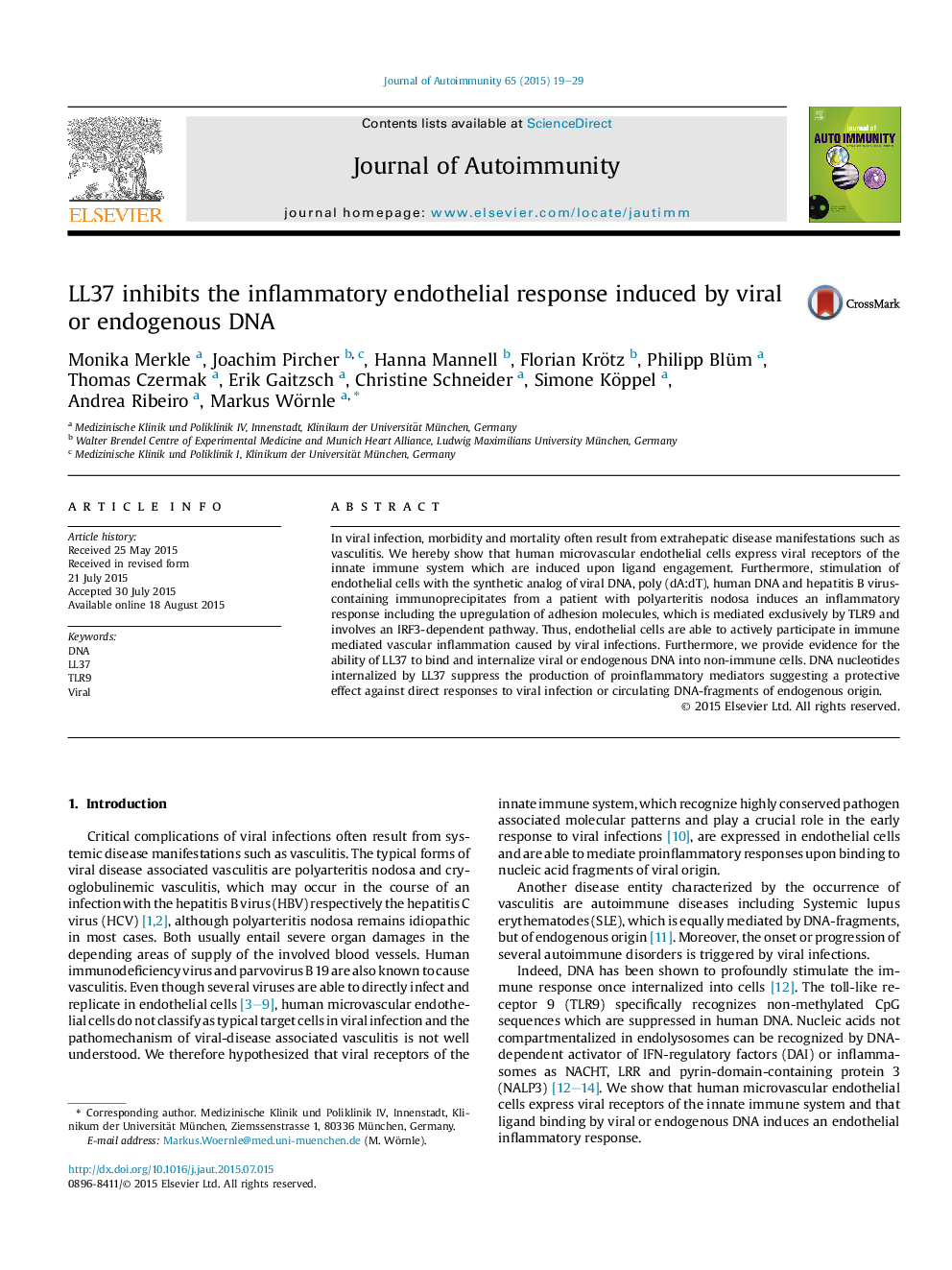| Article ID | Journal | Published Year | Pages | File Type |
|---|---|---|---|---|
| 3367694 | Journal of Autoimmunity | 2015 | 11 Pages |
•LL37 is able to bind and internalize viral or endogenous DNA into non-immune cells.•DNA internalized by LL37 suppress the production of proinflammatory mediators.•LL37 could have protective effects against direct responses to viral infection.•LL37 could have protective effects against DNA-fragments of endogenous origin.
In viral infection, morbidity and mortality often result from extrahepatic disease manifestations such as vasculitis. We hereby show that human microvascular endothelial cells express viral receptors of the innate immune system which are induced upon ligand engagement. Furthermore, stimulation of endothelial cells with the synthetic analog of viral DNA, poly (dA:dT), human DNA and hepatitis B virus-containing immunoprecipitates from a patient with polyarteritis nodosa induces an inflammatory response including the upregulation of adhesion molecules, which is mediated exclusively by TLR9 and involves an IRF3-dependent pathway. Thus, endothelial cells are able to actively participate in immune mediated vascular inflammation caused by viral infections. Furthermore, we provide evidence for the ability of LL37 to bind and internalize viral or endogenous DNA into non-immune cells. DNA nucleotides internalized by LL37 suppress the production of proinflammatory mediators suggesting a protective effect against direct responses to viral infection or circulating DNA-fragments of endogenous origin.
